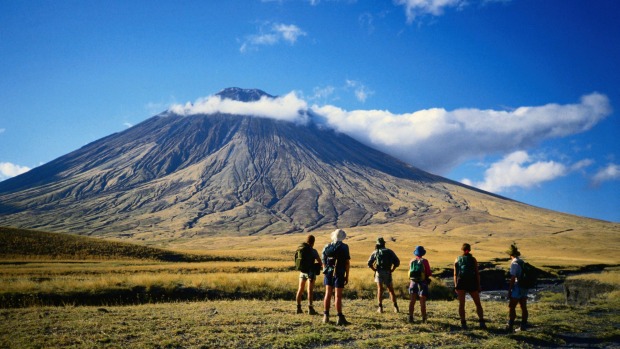
It's 1992 and I'm drinking my first ever gin and tonic in the courtyard of Nairobi's historic Norfolk Hotel. It's only right that I should order a drink unfamiliar to me yet favoured by Kenya's notorious Happy Valley set – British colonials said to have lived a life of indulgence in this African paradise in the 1940s.
The ice clinks deliciously in my glass. The Kikuyu waiter stands to the side, alert should I decide to order a refill. The hot Nairobi sun is filtered, thankfully, by the equatorial foliage that crowds this enclosure. Inside the hotel, crisply dressed bellboys smile and call "Jambo!" to newly arrived guests. Patrons take afternoon tea at tables set with white linen cloths and polished silver services. Men dressed in khaki slump into wicker chairs and are cooled by the ceiling fans that whir gently above them.
It's nearly 30 years since Kenya gained independence from Britain, yet the atmosphere here is unreservedly colonial. Safari-goers gather in high-spirited groups inside reception rooms hung with sepia photographs; they are at home in this Tudor-style hotel, built almost a century earlier near the dusty British East Africa Protectorate rail allotment that would eventually become Nairobi.
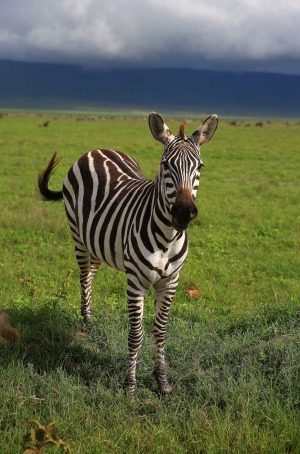
And no wonder they are drawn to this place, for it is filled with the ghosts of those who passed through,the pioneers who sowed the seeds of the modern-day safari: American former president Theodore Roosevelt, whose hunting expedition was said to have been the most lavish ever; writer Ernest Hemingway, who detailed his safari of 1933 in the book Green Hills of Africa; Danish author Karen Blixen (pen name Isak Dinesen), who wrote Out of Africa, and her lover, the big-game hunter Denys Finch Hatton, who had only a few requirements for a successful safari: three rifles, supplies for a month, and a gramophone on which to play Mozart.
The safari-goers of 1992 are pausing here at the Norfolk Hotel to collect themselves before launching out onto the plateau that spreads from here in all directions before it erupts into mountains or sinks into lakes or collapses into the Great Rift Valley. Although this group's aspirations are simpler – they don't have a month to spend on safari, and they won't be taking rifles or a gramophone – they, too, are chasing that most romantic and enduring of quests: the great African safari.
How to explain the deeply primal appeal of the safari, when on paper it sounds so banal? (Drive around for hours searching for wild animals; rejoice when one is spotted, even fleetingly; toast it with a drink; retire to a flimsy canvas tent and listen through the night to those elusive animals roaring and snorting all around you.)
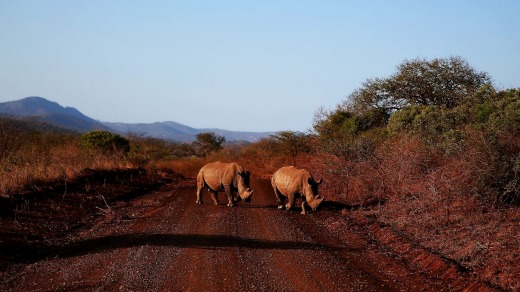
Yet the desire among Westerners, in particular, to engage with the primal landscapes of Africa, with the living oddments that populate them – black-and-white striped "horses", erratically chequered animals whose necks stretch up to the sky, hulking grey monoliths with noses like hosepipes and ears the shape of Africa – attests to a deep longing among those of us removed from this cradle of mankind to reconnect with it.
But the safari hasn't always been such a noble pursuit. When caravans first started moving across Africa they were led by Arab and African merchants intent on carving out lucrative trade routes (the Swahili term safari is derived from the Arabic word safar, which means "to journey"). Their cargo sometimes included slaves, to be sold in the furthest reaches of the continent.
Missionaries and explorers followed in these pioneers' footsteps, marvelling at the natural phenomena they encountered along the way, and in 1836 English military engineer William Cornwallis Harris led the first official safari, a simple wildlife-viewing expedition. But it was Europe's scramble for Africa and consequent colonisation of it in the late 19th and early 20th centuries that opened up the continent to a new breed of safari-goer: big-game hunters so utterly transfixed by the beasts roaming its plains that they couldn't help but answer the deeply primitive instinct to hunt and kill them.
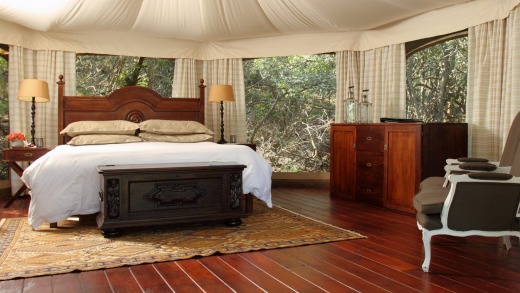
And so they did, in grand style. African porters were tasked with setting up mobile camps, ensuring all the while that no comfort – not the china, nor Mozart, nor that gramophone – was left behind. Some animals were shot, others were observed; the English names for undocumented species were scribbled in notebooks. Cured skins and trophy heads were shipped off to decorate the walls of manors in far-off countries.
But it was only a matter of time before men like William John Burchell, for whom Burchell's zebra is named, and Frederick Selous, memorialised at the Selous Game Reserve in Tanzania, started to recognise the problems inherent in wholesale, indiscriminate hunting. Slowly they transformed from big-game hunters into conservationists. And so, in the mid-20th century, the modern, conservation-led safari was born.
****
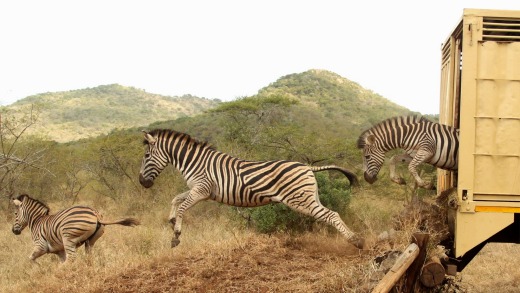
It's late 2015, and I'm sipping a gin and tonic again, this time on a hillside in the South African province of KwaZulu-Natal. A bank of clouds, bruised black and blue, has gathered on the far horizon. Lightning rips through it. It's a tantalising sight, for this region has been wrung dry by an 18-month drought.
I'm a guest at Thanda Private Game Reserve, and I've been shooting game all day: a pair of cheetahs stretched out on the red earth like great big kitty cats; a pride of lions enjoying a postprandial nap; a herd of elephant seeking sustenance on wilted marula trees.
My trophies are the thousands of photographs I've amassed during the years I've been going on safari – first as a girl growing up in South Africa when game was spotted from within the confines of a school tour bus; then on my 2000-kilometre honeymoon jaunt along the back roads of the Kruger National Park; and as a journalist reporting on the preservation of leopards in Londolozi, armed protection of rhino in Nanyuki and women's crucial role in conservation at Ngorongoro Crater.
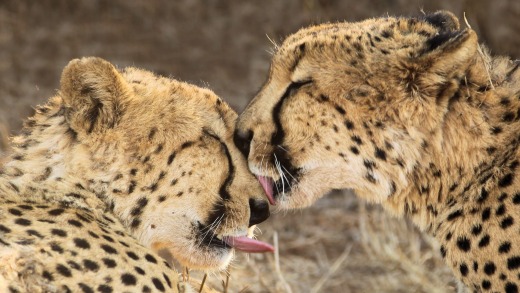
Though hunting still occurs today – controversially so – it isn't the biggest challenge facing conservationists and safari operators. There are issues more complex: how to fund impoverished game parks, eradicate poaching and ensure that resources aren't being exploited? How to offer memorable safari experiences while meeting the needs of local communities and wildlife populations?
At Thanda, the balance is being struck. Guests stay in luxury tents and boma-styled villas, eat smoked springbok carpaccio and pan-seared ostrich, take Land Cruiser game drives and drink cocktails while gazing out at those incomparably beautiful African sunsets. But they're also invited to view this activity from another perspective, to acknowledge the ancient Zulu culture that is as integral to this environment as the animals, and to comprehend the sweat and tears that are shed in conserving it.
The morning after that faux storm – the clouds didn't break, though soon they will – I join Thanda's habitat management co-ordinator, Letisha Kleinschmidt. She and her colleagues regularly host guests as they track rhino, dart animals and conduct game counts. This morning we're checking fences and clearing roads on a tract of land newly leased from Zulu King Goodwill Zwelithini.
The Land Cruiser rattles along dirt roads, past the ruins of Zwelithini's house, into paths choked with thornbush. Sweet veld stretches out between Bombolo Mountain, with its craggy bluff, and the Lebombo Mountains bordering Mozambique and Swaziland. Soon, this part of the reserve will be opened to guests, and the bush must be tamed in preparation.
Sichivolo Myeni and Philani Fakude jump off the Cruiser and raise their machetes to the thickets; in parts they are so profuse Myeni must fire up his chainsaw. The pair spend their days maintaining the park, filling holes made by warthogs that burrow beneath fences and escape into neighbouring landholdings, burning firebreaks and fighting fires, eradicating invasive species like parthenium, prickly pear and lantana, hauling water to drought-parched animals. Like many in their community, their livelihood depends on Zululand's natural resources and the tourists they attract.
And the economic impact is impressive: three job opportunities are generated with the creation of every tourist bed, according to conservation organisation African Parks. This conservation-led economy is critical for the longevity of protected areas, they say, for reserves – and hence, safaris – will survive only as long as local communities benefit from them.
That afternoon, I take the long, hot, dusty drive from Thanda to Nibela Primary School near the shores of Lake St Lucia. The drought has hit the children of this community particularly hard; some days they have nothing to eat. But this hardscrabble school, though set farfrom the region's luxury safari lodges, bears testament to the positive influence their patrons can have.
Students here – along with those of almost 100 other schools around the country and in Namibia – are recipients of Thanda's Star for Life program, funded by private corporations, organisations and tourists. The program offers nutritional, health and psychosocial support – essential in this area where rates of abuse and HIV infection are high. The results have been startling: in just three years, the grade 3 pass rate has jumped from 63 to 90 per cent.
"If someone is troubled mentally, that means they won't perform well in class," principal Bonga Mdluli says.
"Our learners, through engaging with Star for Life, they have the chance to perform better. We've seen a drastic improvement in results. My children are confident."
And so they are. Mdluli leads me from his cramped office, decorated with trophies his students have won, and into the playground. The bell rings, and these pint-sized children swarm out of their classrooms, singing, dancing, teasing, laughing, grabbing brooms and joyfully sweeping the concrete floors. There's not a pith helmet in sight, but the benefits of the modern safari are plain to see.
africanparks.eu; starforlife.co.za.
South African Airways flies from Perth to Johannesburg daily with same-day connections to 24 cities in Africa. Australian travellers can connect into Perth from major cities through SAA's codeshare partner, Virgin. See flysaa.com/au
Federal Airways offers shuttle and charter services to numerous safari destinations in South Africa and southern Africa. Prices start at $280 per person one way. See fedair.com
The Classic Safari Company has a variety of safari experiences at lodges, camps and reserves (including Thanda Private Game Reserve) in 16 African countries, as well as in India and South America. Safaris are tailor-made and prices vary. See classicsafaricompany.com.au; thanda.com
While modern-day safaris originated on the wild African savannahs, the idea of making a journey through an animal-populated landscape is familiar all over the world. Here are some favourite non-African safari destinations – pith helmets optional.
Australia's vast interior is made for safari: it inspired the epic camel expedition from Alice Springs to the WA coast, almost 3000 kilometres away, by lone traveller Robyn Davidson in 1977. Modern-day safari-goers can undertake a far tamer version of Davidson's trip, riding camels through the outback for a few days, sleeping in swags, and looking out along the way for native species like dingoes, bilbies, red kangaroos, thorny devils, emus and plenty of snakes.
This polar region is surely the most pristine, remote and thinly populated destination in which to see wildlife. View the astounding diversity of creatures that thrive in this glacial wilderness from the comfort of an expedition ship: whales, numerous seal species, rookeries of gentoo, Adelie, king, macaroni, rockhopper and chinstrap penguins, and great flocks of migratory seabirds like albatross and skuas.
The Pantanal, which comprises the world's largest tropical wetland and extends into parts of Bolivia and Paraguay, is home to an improbable diversity of creatures including marsh deer, giant river otters, red-footed tortoises, hyacinth macaws, tapirs, giant anteaters and one of the largest jaguar populations in the world. The waterways are filled with caiman and fish that have adapted to live in these oxygen-depleted floodplains. Safaris are best undertaken by canoe or on foot.
Hunting and poaching have severely depleted the number of India's Bengal tigers in the past century, but conservation programs and the establishment of wildlife reserves are helping to bring these animals back from the brink of extinction. Safaris here draw from the same colonial template that shaped the African version; visitors can sip gin and tonics while staying in luxury, Mughal-style tents near the famous Ranthambore National Park – but tiger sightings are still regarded as a rare and special privilege.
The thrill of the safari is often in the chase, and in British Columbia spirit (or Kermode) bears will, more often than not, evade the safari-goer. This subspecies of the American black bear – some of which are cream-coloured due to a recessive gene – manage to conceal themselves well in their native habitat on Canada's western coastal fringe. Improve your chances of spotting one by climbing aboard a sailing ketch and cruising the region's estuaries and fjords. If the bears don't reveal themselves, be consoled by grizzly bears, wolves, eagles and humpback whales.
Julie McIntosh has only ever had one job: running The Classic Safari Company, which she founded in Sydney in 1992. Born and raised in South Africa, McIntosh started out small, selling safaris in Botswana and then southern Africa. Today, she and her team send clientele on safari all over Africa, India and South America.
What is your idea of the perfect safari?
The location needs to be breathtaking. Wildlife and birdlife aplenty. A comfortable tent and loo – preferably with a view. Top-notch characters as your hosts, and then the mandatory tasty meals and cold drinks on tap.
Do safaris have to be exclusive?
They are better when they are as you get the best out of the experience. But the dynamic of a group, if [it's] the right one, can be stimulating, as you do meet some very interesting people travelling in Africa – especially at the camps with soul.
What are your company's popular safaris?
Kenya is always popular because you can do wildlife, culture and scenery, and stay with third and fourth generation [British-Kenyans] who can share the whole safari experience so well. Botswana is solid and pure wilderness. The Serengeti by name draws people in, but I prefer the experiences with the right guides – and the odd helicopter thrown in!
What advice would you offer people who dream of going on safari?
[Visit] Kenya or Botswana. Don't compromise quality over length of time away – in other words, if budget becomes an issue, do less, but do it the right way. And don't try to do too much in one holiday. Each country offers a substantial safari in itself.
How have safaris changed?
Finding the unique is becoming tougher because people are more savvy. Families are far more inclined to travel – perhaps the Baby Boomers' kids have grown up and they can afford to take them [with], and they do want active [holidays]. Interestingly, some of our travellers who chased luxury lodges in the early days are seeking out the more rudimentary to ensure the experience is most authentic.
Andrew Parker and Cynthia Walley, of African Parks, a not-for-profit conservation organisation that rehabilitates and manages parks in joint public-private ventures, address some safari misconceptions.
Safaris are expensive
In the parks that we manage we offer different levels of accommodation and experience: basic campsites often run by local communities, mid-level lodges and high-end safari lodges. Where parks are located close to major cities, we set up visitor day centres for both local citizens and international visitors. Conservation visits and education for schoolchildren from communities surrounding the parks we manage are a major component of our community engagement program.
Africa is a continent, not a country
Ebola resulted in widespread cancellations by visitors to the entire African continent – even though it was contained in west Africa. The outbreak even saw cancellations to destinations like Cape Town in South Africa. Similarly, terrorist attacks by Islamic extremists in Kenya also affected tourism across the continent. The sector has the ability to bounce back. Fortunately an African safari is an unrivalled experience and one that is on most travellers' bucket lists.
Anti-poaching patrols are making headway in surprising places
Since taking over the management of Zakouma National Park in Chad in 2010, African Parks' efforts have not only stabilised the herds traumatised by massive poaching, and [which] were too stressed to breed, but intensive anti-poaching efforts have led to the turnaround of the park and the birth of calves. More than 50 elephant calves have been born in Zakouma since 2013. Only three elephants have died as a result of poaching-related incidents – two were orphaned calves – in the park in the past four years. The current size of the herd is estimated at 480. The aim is to get the population to 1000 by 2025.
The bad outweighs the good
The construction of tourism facilities – roads, airstrips, water, waste and sewage utilities – has an unavoidable footprint, but this is generally limited to a small area. Short-term tourism demands, game viewing in particular, can also place pressure on long-term ecological goals whereby the quest to satisfy short-term tourism requirements compromises long-term ecological sustainability. However, where tourism is managed in a responsible manner, the benefits generally far outweigh the downside.